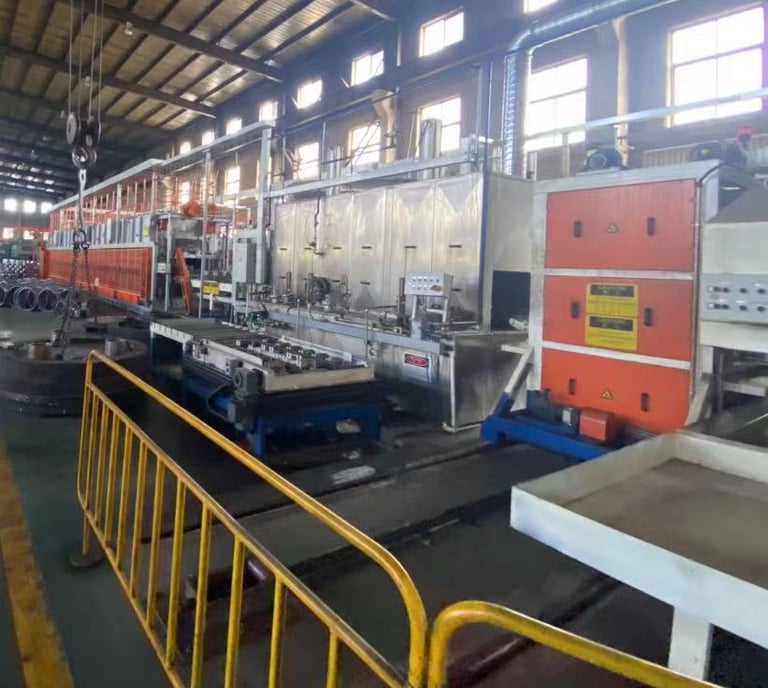Current Severe Challenges in China's Bearing Industry
The Chinese bearing industry is grappling with a critical situation, where overcapacity, price wars, and capital chain crises intertwine, creating a vicious cycle. Below is a deeper analysis and potential strategies to address these challenges.


1. Overcapacity and the Inevitability of Industry Consolidation
Declining Global Demand: Factors like global economic slowdown, the Russia-Ukraine conflict, and supply chain restructuring have reduced demand for bearings in traditional sectors (e.g., automotive, machinery), leaving Chinese companies with unsold inventory from previous expansions.
The Fatal Impact of Price Wars: Small and medium-sized enterprises (SMEs), trapped in homogeneous competition, are forced to slash prices or even sell on credit, draining cash flow. For example, some Shandong-based bearing firms sold stock at 20% below cost, leading to unrecoverable losses and eventual bankruptcy.
Rising Industry Concentration: Mirroring Japan’s bearing industry evolution in the 1970s—where mergers (e.g., NSK, NTN) eliminated 80% of inefficient firms—China is likely undergoing a similar transition toward high-value competition.
2. Immediate Causes of the Crisis
Fallout from the Russia-Ukraine War:
Disruptions in raw material supplies (e.g., high-end bearing steel from Ukraine) spiked costs.
Export-reliant firms faced capital chain ruptures due to payment defaults in Eastern European markets.
Blind Expansion Backfires: Many companies invested heavily in automated production lines around 2020 but remained stuck in the low-end market, with capacity utilization below 50%, dragging down profits.
Collapse of Credit Systems: Under credit sales, delayed payments from downstream clients became rampant. In 2022, the industry’s accounts receivable turnover days surged by 47 days, worsening liquidity crises.
3. The Shandong Bearing Problem: A Microcosm of Industry Woes
Low-End Manufacturing Hub: Regions like Linqing in Shandong host clusters of small bearing factories reliant on high-volume, low-margin models. Some cut corners (e.g., substituting standard steel for bearing steel), drawing repeated sanctions from regulators.
"Bad Money Drives Out Good": Counterfeit products (priced at 1/3 of genuine bearings but with <10% of the lifespan) squeezed out legitimate players, tarnishing regional reputations.
Failed Upgrading Attempts: Some Shandong firms tried shifting to high-end bearings but lacked technical expertise, resulting in low pass rates and accelerated bankruptcies.
4. Survival and Transformation Strategies
Short-Term Stopgaps:
Proactive Capacity Cuts: As noted, drastic measures like C&U Group’s 2023 shutdown of 20% inefficient lines are essential to preserve cash flow.
Strict Credit Control: Implement customer credit ratings, even at the cost of rejecting risky orders.
Medium-to-Long-Term Breakthroughs:
Niche Specialization: Avoid commoditized bearings by targeting segments like wind turbine main shaft bearings (e.g., Luoyang LYC’s breakthroughs) or robotics harmonic drive bearings.
Technology Alliances: SMEs could collaborate with universities/R&D institutes on shared tech (e.g., ceramic bearing coatings) to split R&D costs.
Digital Cost-Cutting: AI-optimized production (e.g., Wanxiang Qianchao’s 30% inventory turnover boost via smart scheduling).
Leveraging Policy Support:
Apply for "Little Giant" (专精特新) incentives (tax breaks, low-interest loans).
Join state-backed import substitution projects (e.g., high-speed rail bearing localization).
5. Future Outlook: Survival of the Fittest
Bankruptcy Wave to Continue: An estimated 30%+ low-end capacity will be phased out in 3 years, with top 10 firms (CR10) capturing ≥50% market share.
Traits of Survivors: Companies must excel in at least one area:
Technical moats (e.g., ZYS’s aerospace bearings);
Vertical integration (control from steel to finished products);
Global channels (e.g., Cixing Group’s aftermarket presence in EU/US).
Conclusion
The crisis stems from a mismatch between China’s extensive growth model and the demand for high-quality development. Short-term pain is unavoidable, but through "capacity reduction → quality improvement → differentiation," resilient firms may emerge stronger post-consolidation. Much like Japan’s bearing industry revival after the 1970s oil crisis, China’s scale advantage, coupled with technological upgrades, could eventually foster global-tier leaders.
